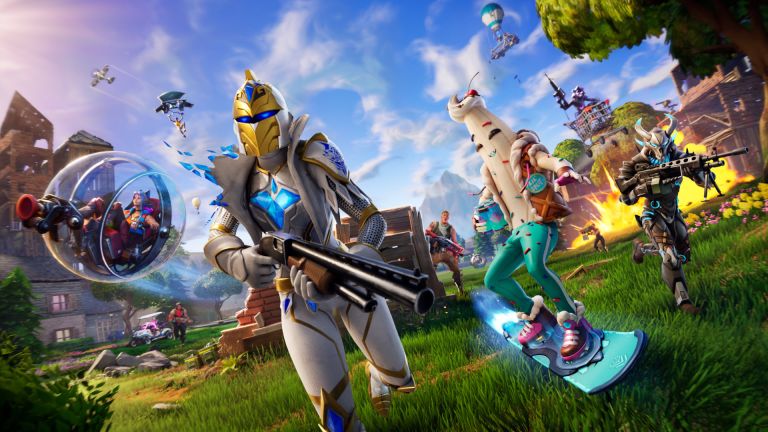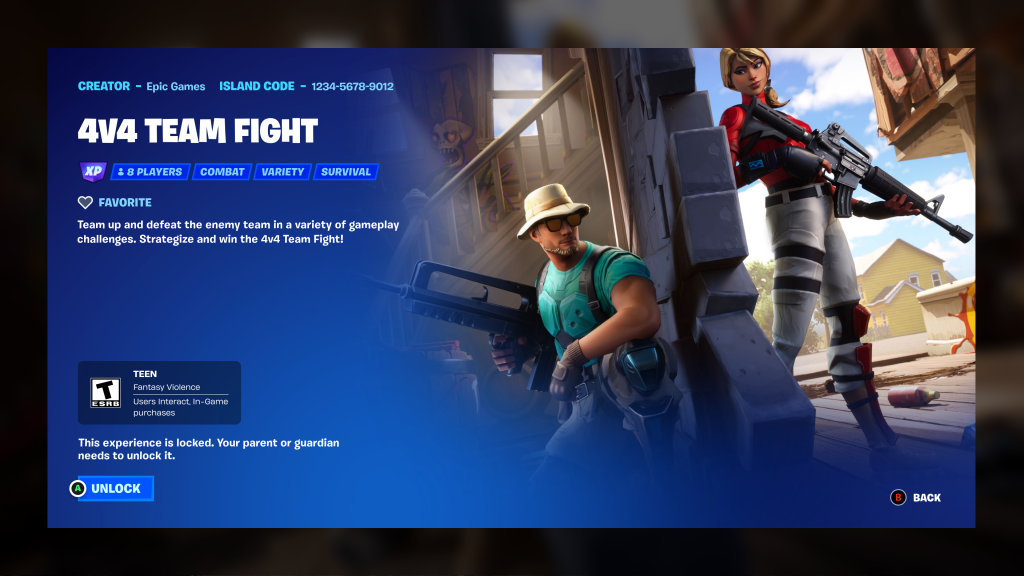Fortnite’s Controversial Cosmetics Ban Explained: What Skins Are Banned?
The only things more bizarre than Fortnite's recent skin bans are the apparent explanations for those bans.

While Fortnite‘s recent “OG” season helped the game set a new concurrent player count record, live service games are often only as good as their latest update. Well, Fortnite‘s latest update seemingly resulted in quite a few character skins being banned from the game, and players are scrambling to make sense of it all.
In case you didn’t know, character skins are an important part of the entire Fortnite experience. More than mere cosmetics, Fortnite‘s various character skins have helped establish the game’s personality. Acquiring them has become nearly as competitive as acquiring weapons and items in other battle royale titles.
More importantly, those skins have helped earn Fortnite developer Epic Games a ridiculous amount of money over the years. That’s because many of Fortnite‘s most popular character skins are based on existing properties. By turning Fortnite into the world’s largest billboard, Epic has grown the game’s pop culture presence, struck a number of lucrative promotional deals, and, naturally, encouraged millions of players to collectively spend millions of dollars for the privilege of looking like Spider-Man or John Wick. It’s effectively been the backbone of the game’s economy.
However, a considerable wrench was thrown into the money machine recently when some Fortnite players discovered that they could no longer access some of their favorite character skins, custom gliders, and other previously acquired (often purchased) accessories. What some initially considered to be a glitch turned out to be an intentional part of the update. Yet, there was little communication about what was happening or why it was happening now. So, what gives?
It turns out the latest Fortnite update included an updated age restriction feature that prevents certain players from using certain cosmetics in age-gated custom modes. Basically, there is a recommended age for user-created islands (maps and modes, essentially) in Fortnite‘s Creative mode. If an Island is intended for a young or wide audience (meaning those with ratings E, E10+, or regional equivalents), certain cosmetic items will be banned on those maps to all players.
So which skins are banned in Fortnite? Epic hasn’t published a full list of banned cosmetic items yet, but those cosmetics that are banned are all marked by an in-game “warning” logo and text that explains that the item cannot be used in certain restricted parts of the game. Where this story gets really weird, though, is when you dive into the reasons why certain skins are now banned in Fortnite.
Most notably, the ban seemingly applies to any cosmetic that shows a gun or suggests the possession of a gun. Even characters like Lara Croft who are portrayed as carrying a gun holster are banned in certain modes as part of this initiative. The “gun rule” also applies to things like sprays, gliders, and other cosmetics. If there is anything to do with a gun in any of those cosmetics, you can be reasonably sure the new rule will impact them. Mind you, other violent weapons (knives, swords, and even truly elaborate blades not of this world) are not necessarily impacted by this part of the new rule. Bizarrely, characters who have grenades or other explosives on them are also not currently impacted.
It’s not just guns, though. Some cosmetics that don’t feature a gun on them are also banned as part of this new initiative. While we’re still waiting for clarification on the exact things that can get a cosmetic banned, it has been observed that the ban also likely impacts cosmetics that could be deemed frightening to younger players. Said cosmetics include character skins like Venom and Carnage.
In the interest of complete fairness, it’s worth reiterating that these “bans” only currently apply to a relatively small amount of custom Fortnite content. They do not impact the game’s major modes and will likely not directly impact the majority of players. Furthermore, the “logic” here seems to be that the custom modes in question typically don’t feature combat and therefore should not feature weapon-based cosmetics either.
Still, you probably see where this is going. Fortnite, a battle royale game that largely revolves around shooting and killing other players, is now saying that some of its younger players shouldn’t be exposed to such weapons and other potentially upsetting imagery. Without getting too deep into any political arguments (I’m not even sure who this move is intended to please), I’ll just say that it’s darkly hilarious that this is the line the Fortnite team has seen fit to draw.
Again, not only is Fortnite a battle royale title, but the vast majority of players whom this ban will impact will have had to have used a gun (or a lot of their parents’ money) to acquire the cosmetics they can no longer use. Even Fortnite‘s menu screens (which feature a warning about age-restricted content) include characters holding fairly realistic guns:

The Fortnite team has since said that their long-term plan is to modify the currently impacted cosmetics to make them friendly for those impacted by these settings. In other words, the idea is that players will eventually be able to use modified versions of these currently “banned” items that will seemingly have the offending material removed. At present, though, there is no word on how that update is going to work or when, exactly, it will be available.
Regardless, this is a truly strange move that immediately recalls the saying “putting the genie back in the bottle.” For quite some time, Fortnite has been absurdly popular among very young gamers despite being an inherently violent game (to a basic degree) that often features promotions for a wide range of largely adult material (Invincible, The Walking Dead, and John Wick, just to name a few). The idea that Epic Games can course-correct all of this in order to protect kids (or whatever this is all meant to do) is laughable yet also strangely insulting. Mind you, I’m just talking about the broad strokes of this entire approach. There is much more to say about the often baffling specifics regarding what is and isn’t banned.
For the moment, though, this ban does still seem limited to a small portion of the game and will likely be addressed in a future update. At this time, there have also been no indications that Epic intends to allow this decision to impact any other parts of the game. For that matter, there has been no official word on what external or internal factors may have prompted this decision in the first place.
